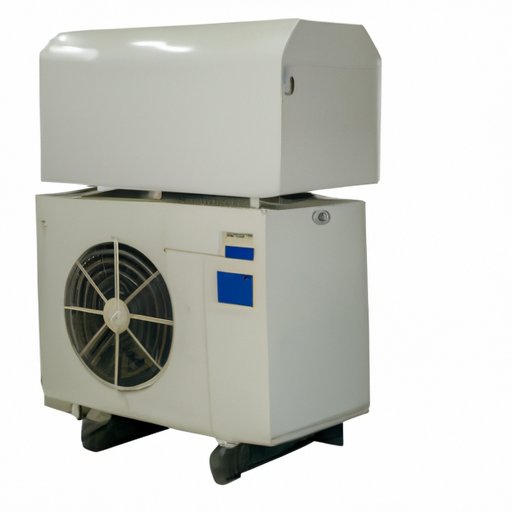Introduction
When it comes to staying cool during hot summer months, portable air conditioners can be an invaluable asset. But what exactly are portable air conditioners, and how do they work? In this article, we’ll explore the science behind portable air conditioners, how they work, the pros and cons associated with them, the technology they use, and the essential components that make them up.

Exploring the Science Behind Portable Air Conditioners
At its core, air conditioning is based on a simple principle: heat is transferred from one area to another. The science behind how this works involves a variety of physics and chemistry concepts, such as thermodynamics, pressure, and the properties of gases. To understand how portable air conditioners work, it’s important to have a basic understanding of these concepts.
The process of heat transfer relies on the fact that warm air rises and cooler air sinks. The warmer air is drawn into the portable air conditioner, where it passes over a series of evaporator coils. These coils contain a liquid refrigerant, which absorbs the heat from the air. This cooled air is then pushed out from the unit, while the heat is transferred to the outside air through a series of condenser coils.
How Do Portable Air Conditioners Work? A Step-by-Step Guide
Now that we’ve explored the science behind how portable air conditioners work, let’s take a look at the actual step-by-step process involved. Here’s a brief overview of what happens when you turn on your portable air conditioner.
First, the warm air from your room is drawn into the unit, passing over the evaporator coils. As it does so, the refrigerant inside the coils absorbs the heat from the air, cooling it down. This cooled air is then pushed out from the unit back into the room. Meanwhile, the heat that was absorbed by the refrigerant is released outside via the condenser coils.
Here’s a more detailed breakdown of how portable air conditioners work:
- Warm air from the room is drawn into the unit via a fan.
- The air passes over the evaporator coils, which contain the refrigerant.
- The refrigerant absorbs the heat from the air, cooling it down.
- The cooled air is pushed out of the unit and back into the room.
- The heat absorbed by the refrigerant is released outside via the condenser coils.
- The process is repeated until the desired temperature is reached.

The Pros and Cons of Portable Air Conditioners
As with any type of appliance, there are advantages and disadvantages to using portable air conditioners. Let’s take a look at some of the pros and cons associated with these units.
Advantages
- Portable air conditioners are relatively inexpensive.
- They’re easy to install and require minimal maintenance.
- They’re flexible – you can move them around to different rooms as needed.
- They don’t require any permanent installation.
- They’re energy efficient and use less electricity than central air conditioning systems.
Disadvantages
- They’re not as effective as central air conditioning systems.
- They can be noisy.
- They need to be vented to the outside, which can be difficult in some homes.
- They can be heavy and difficult to move around.

Understanding the Technology of Portable Air Conditioners
Modern portable air conditioners use a variety of advanced technologies to provide more efficient cooling. Some of the most common technologies used in portable ACs include:
- Variable speed compressors – These compressors adjust their speed depending on the temperature in the room, providing more efficient cooling.
- Smart thermostats – Smart thermostats allow you to control the temperature in your room remotely via a smartphone or other device.
- Air purification systems – Some portable ACs come with built-in air purification systems for added convenience.
A Look at the Different Components of Portable Air Conditioners
Finally, let’s take a look at the different components that make up a portable air conditioner. These components include:
- Evaporator coils – These coils contain the refrigerant, which absorbs the heat from the air.
- Compressor – The compressor compresses the refrigerant, allowing it to absorb more heat.
- Condenser coils – These coils release the heat absorbed by the refrigerant to the outside air.
- Expansion valve – This valve controls the flow of refrigerant between the evaporator and condenser coils.
- Refrigerant – The refrigerant is the substance that absorbs the heat from the air.
Conclusion
In conclusion, portable air conditioners are a great way to stay cool during hot summer months. They use a variety of physics and chemistry principles to transfer heat from one area to another, and they come with a variety of advanced features to make them more efficient. By understanding the science behind how portable air conditioners work, as well as the components that make them up, you can make an informed decision about which type of air conditioner is right for you.


